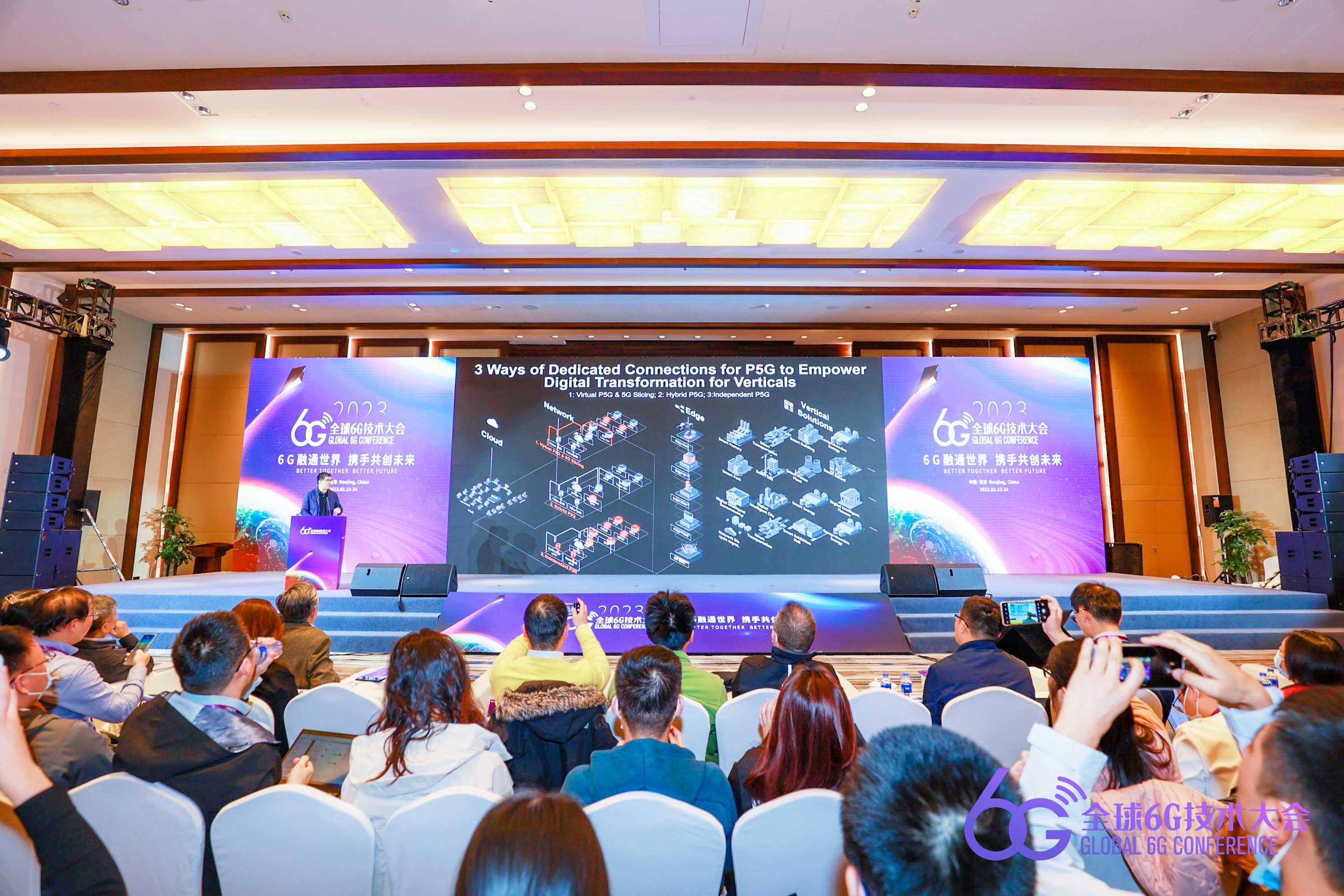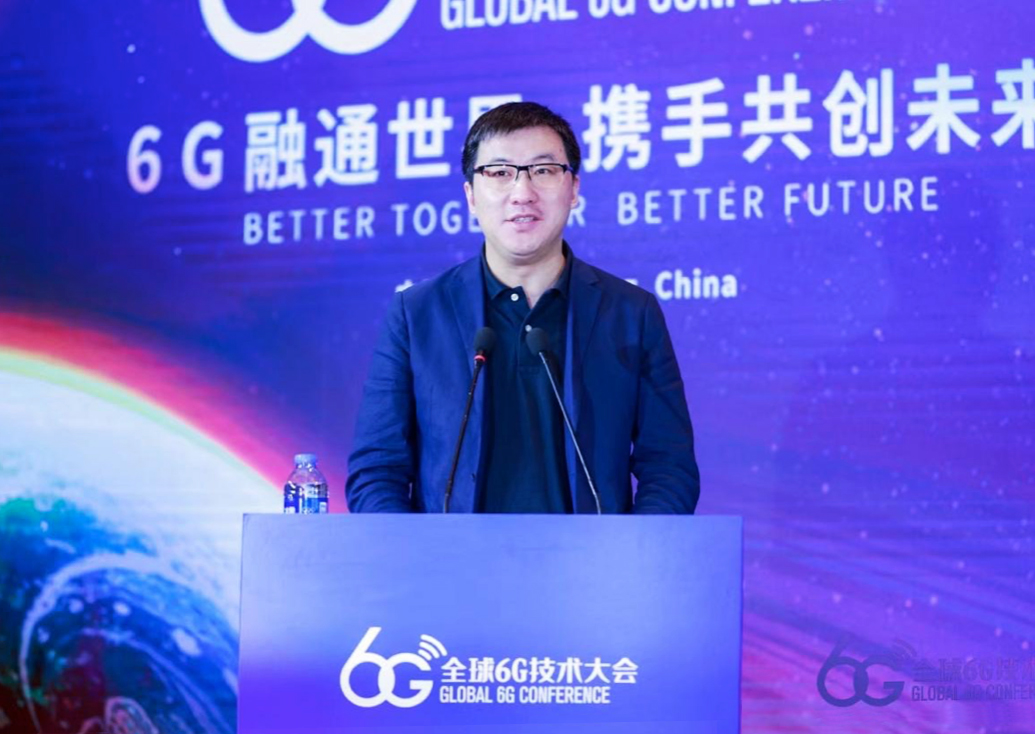On March 23, the 2023 Global 6G Technology Conference hosted by Purple Mountain Laboratories and FuTURE MOBILE COMMUNICATION FORUM opened in Nanjing, in which Vice Minister of Science and Technology Zhang Guangjun, Deputy Secretary of Jiangsu Provincial Party Committee Deng Xiuming, and Mayor of Nanjing Chen Zhichang attended and delivered speeches. Dr. Ouyang Ye, Senior Vice President and CTO of AsiaInfo, IEEE Fellow, was invited to attend the conference and delivered a keynote speech at the forum of “The 6G Sensing, Computing and Communications Architecture and Key Technologies”.

Figure: 2023 Global 6G Technology Conference
With the theme of “6G Integrates the World and Jointly Creates the Future”, the conference invited academicians and industry experts from over ten countries around the world to deeply explore the transformation and technological innovation of the 6G network focusing on 6G application scenarios and standardization progress, synaesthesia architecture and key technologies, wireless transmission and spectrum sharing, space-earth fusion technology, and on-demand services, so as to enhance international 6G network cooperation, and promote the formation of a globally unified 6G standard and ecology.

Figure: Dr. Ouyang Ye delivers a keynote speech
Two Evolving Directions of Symbiotic Computing and Communications
Dr. Ouyang Ye said that as one of the potential key technologies of 6G network, symbiotic computing and communications have two main evolving directions at present. The first direction is to add independent computing cards or special computing servers to network devices to achieve hardware integration of computing power and network. The second direction is the computing power endogenous network advocated by AsiaInfo, which means that there is no need to add additional hardware devices. Decoupling the idle computing power of a large amount of 5G BBU from communication services can provide computing power to the computing applications, so as to realize flexible and low-cost computing power supply.
Three Core Values of Computing Power Endogenous Network
AsiaInfo's computing power endogenous network is designed to achieve “symbiotic computing and communications” by enhancing the functionality of 5G BBU and 5G MEC without changing the basic functions and architecture of the network. Computing power endogenous network has three core values as follows. The first is “subtraction on investment”: computing power endogenous network can help service providers save investment cost by preventing the increase in investment costs of service providers caused by the purchase of additional computing power boards or servers; The second is “multiplication on resources”: computing power endogenous network can improve resource utilization through converting the idle communication capacity of 5G base stations into computing capacity, and using time division multiplexing to achieve the mutual conversion of communication capacity and computing capacity; The third is “addition on capability”: in addition to providing basic capabilities of network, the 5G base station in the computing power endogenous network can also provide general computing capability and run multi-industry application services.
Six Core Technologies of Computing Power Endogenous Network
Dr. Ouyang Ye pointed out that AsiaInfo has created six core technologies for computing power endogenous network empowering the symbiotic computing and communications, including computing power virtualization, computing power scheduling “marginalization”, network damage free, intelligent scheduling of BBU computing resources, computing power endogenous federated learning, and computing power endogenous network twin simulation.
Computing power virtualization aims to realize intelligent time-division multiplexing of BBU computing and communication capabilities through 5G BBU computing power virtualization, so that BBU can provide computing and communication capabilities at the same time.
Computing power scheduling “marginalization” focuses on issues that affect the efficiency of computing power scheduling based on the central cloud due to network bandwidth or latency. Through built-in scheduling DM of computing and communications in 5G MEC, real-time sensing of 5G BBU load conditions can be achieved, and computing applications can be scheduled to 5G BBU with available computing resources, so as to achieve computing power scheduling “marginalization” and improve scheduling efficiency.
Damage-free network mainly includes damage-free network architecture, that is, computing power endogenous networks need no extra network infrastructure investment abiding by the 3GPP 5G network deployment architecture; Damage-free network protocol aims at concerting idle communication capacity of NE into computing capacity while keeping the 3GPP 5G network control plane and user plane protocols unchanged; Damage-free network QoS adopts a priority guarantee mechanism for communication services, strictly put restriction on the endogenous computing power isolation boundary, and intelligently adjusts the computing power security boundary in real-time.
Intelligent scheduling of BBU computing resources is to deploy dynamic orchestration and scheduling services for computing power resources on 5G MEC, which can realize intelligent scheduling of 5G BBU resources through 4 steps, including resource situational sensing based on non-linear regression algorithms, node evaluation and recommendation based on GNN algorithms, dynamic segmentation of node resource based on machine learning algorithms, and task orchestration and scheduling based on dynamic programming algorithms.
Computing Power endogenous federated learning is a federated learning system based on computational endogenous 5G BBU clusters, which ensures local data not propagate outward by deploying “federated learning” servers and client terminals on 5G MEC nodes and selected 5G BBU sub-clusters, achieves multi-party joint model training and reasoning that meets data privacy protection requirements, and breaks “data islands”.
Twin simulation of computing power endogenous network realizes digital twin modeling for computing power endogenous network resources, constructs a digital twin simulation operating environment and simulation capability for computing power endogenous network, and achieves flexible orchestration of computing power endogenous network services, self-optimization of user experience, and intellectualization of network operation and maintenance, etc.
As an infrastructure, the network provides strong support for economic and social transformation. Dr. Ouyang stated that AsiaInfo is willing to work with communication service providers and industrial partners to jointly promote the innovative application of 6G and “integrated computing” technology based on the computing power endogenous network.





